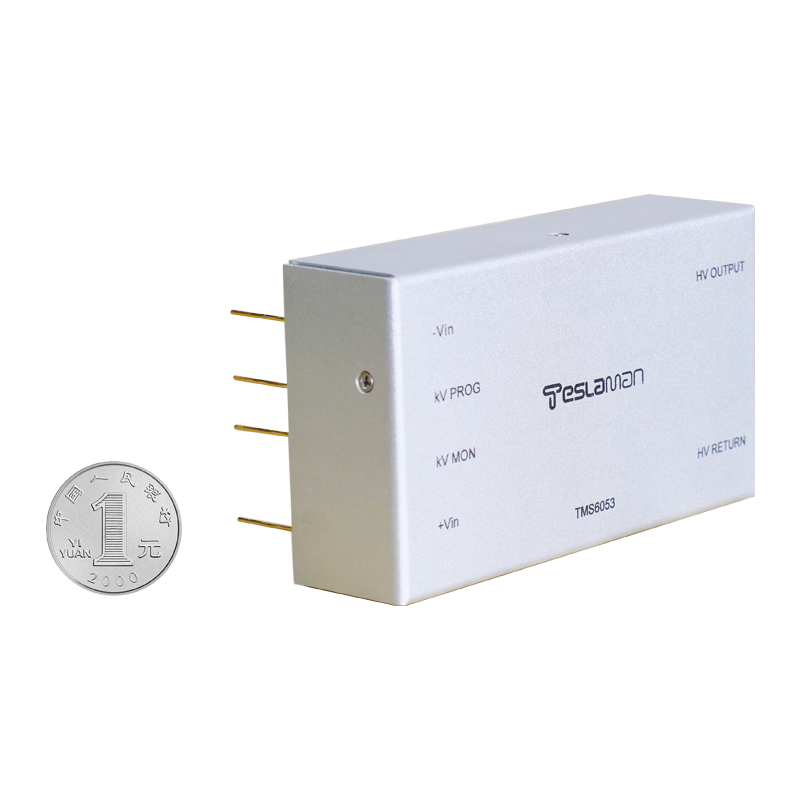Overvoltage Protection Mechanisms for High-Voltage Power Supplies in Electron Microscopes
High-voltage power supplies are core components of scanning (SEM) and transmission electron microscopes (TEM), providing stable electron beam acceleration voltages (typically exceeding 30 kV). However, power fluctuations, load transients, or internal faults may cause overvoltage risks, which can degrade imaging accuracy or damage precision electro-optical systems. Thus, overvoltage protection mechanisms must balance response speed, reliability, and compatibility with microscope systems.
I. Core Mechanisms of Overvoltage Protection
1. Voltage Detection and Threshold Control
• Voltage divider circuits monitor high-voltage output, converting kV-level signals to low-voltage ranges (e.g., 0–3.3V) for comparators or dedicated ICs.
• Adjustable thresholds (±5% of rated voltage) prevent false triggering while ensuring safety for diverse microscope models.
2. Rapid-Response Protection Units
• Transient suppression: TVS diodes (response time <1 ns) absorb instantaneous overvoltage spikes, particularly for microsecond-scale surges.
• Circuit interruption: MOSFETs or SCR Crowbar short-circuit the output during overvoltage, forcing fuse rupture to isolate the power supply and protect high-voltage components.
II. Key Circuit Implementation Techniques
1. Hardware Protection Schemes
• Zener diode reference circuits: Leverage the Zener breakdown effect (e.g., 6.8V threshold) to drive PNP transistors for load disconnection, suitable for low-power scenarios.
• SCR Crowbar circuits: When voltage exceeds the Zener threshold, SCRs ground the output and trigger fuse burnout within milliseconds, ideal for high-voltage/high-current environments.
2. Software-Aided Protection
• Ramp control: Voltage rise from 0–30 kV takes ≥1 second, limiting electrical stress gradients (≤20 kV/s) to prevent sudden surges.
• Multi-parameter coordination: Temperature feedback (>60℃ triggers derating) and leakage current monitoring (>1 mA cuts power) form a multi-dimensional safety net.
III. System Integration and Performance Balancing
1. Anti-Interference Design
• Hysteresis circuits: Use positive feedback to avoid oscillations near thresholds (e.g., ±0.5% hysteresis band).
• EMI shielding: Minimize interference from the microscope’s electron beam deflection fields on power control circuits.
2. Stability and Longevity Optimization
• Low-ripple requirements: Power supply ripple ≤15 ppm (p-p) prevents electron beam energy dispersion and maintains imaging resolution.
• Aging resistance: Multilayer insulation (e.g., polyimide film + epoxy resin) enhances dielectric strength, ensuring ≤5% performance degradation after 1000 hours of operation.
IV. Future Development Trends
• Predictive protection: Machine learning algorithms analyze historical data to dynamically adjust thresholds and preempt risks.
• Nanocomposite insulation: AlO/ZrO coatings boost dielectric strength to 300 kV/cm, supporting higher voltages (e.g., 100 kV for advanced TEM).
Conclusion
Overvoltage protection for microscope high-voltage power supplies is a systematic endeavor demanding precision, speed, and reliability. Innovations in material selection, circuit topology, and system integration are crucial. As microscopes evolve toward higher voltages and lower noise, future protection mechanisms will integrate intelligent prediction and advanced insulation, underpinning cutting-edge scientific research.




















